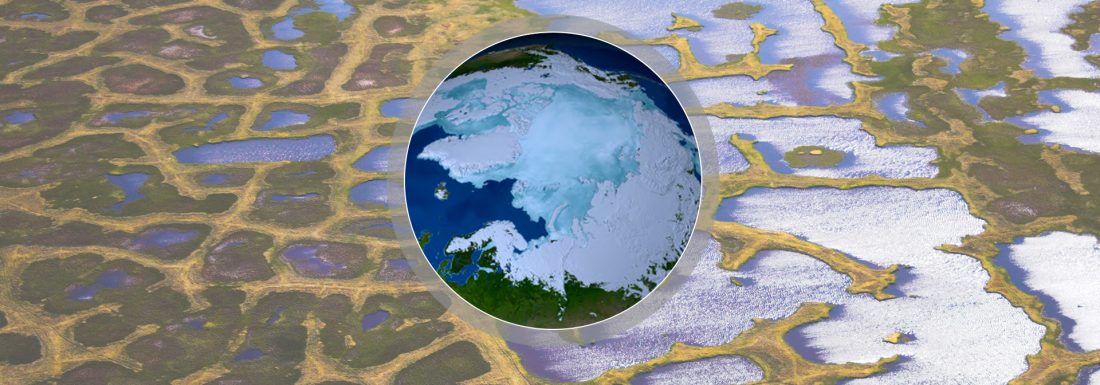The IPCC Special Report on the Ocean and Cryosphere in Changing Climate (2019) includes “permafrost carbon and greenhouse gas emissions” as one of the cases characterised by deep uncertainty. The report states that even if there is a very high confidence that “permafrost temperatures have increased to record high levels including the recent increase by 0.29°C ± 0.12°C from 2007 to 2016”… today, there is “medium evidence with low agreement whether northern permafrost regions are currently releasing additional net methane and CO2 due to thaw.”
In a warming Arctic, longer and warmer growing seasons may accelerate the microbial breakdown of organic carbon stored beneath and within permafrost increasing the magnitude and timing of CO2 and CH4 release to the atmosphere. In addition, rapid permafrost thaw may occur throughout the Arctic, altering surface hydrology, which may contribute to further thawing. Due to these localized feedbacks, permafrost degradation may occur at a much faster rate than would be predicted from changes in air temperature alone. This may lead to a potentially irreversible acceleration in the Methane emissions that may have a significant impact on the climate system.
What are the current methane emissions in the Arctic and what are the sources and sinks? Will the fraction of the carbon permafrost feedback increase in the future? Why we see rapid changes in permafrost not followed by a commensurate net rise in methane emissions? What can we learn from the increasing number of satellite observations over the Arctic high latitudes? These are only some of the critical questions that several scientific communities around the world are facing today using a variety of techniques, data and models.
Addressing those questions requires to overcome major scientific and technical difficulties associated to the scarcity of observations, the complexity of satellite retrievals, the discrepancies between bottom-up and top-down approaches, the understanding of complex processes and its transfer to advanced models, the disentanglement of anthropogenic vs. natural emissions and many others…
In order to further support existing efforts NASA and ESA are launching a transatlantic initiative to help solving the Arctic Methane and Permafrost Challenge to build upon existing and planned capabilities and promote interdisciplinary and collaborative research across communities bringing together different data, results and expertise across the Atlantic to ensure that the final result is bigger than the sum of the parts.
Through this initiative ESA and NASA aims at supporting a multi-year trans-Atlantic collaboration based on networking actions and community efforts to advance in our capacity to better understand, quantify and predict methane emissions from permafrost changes in the Arctic.


